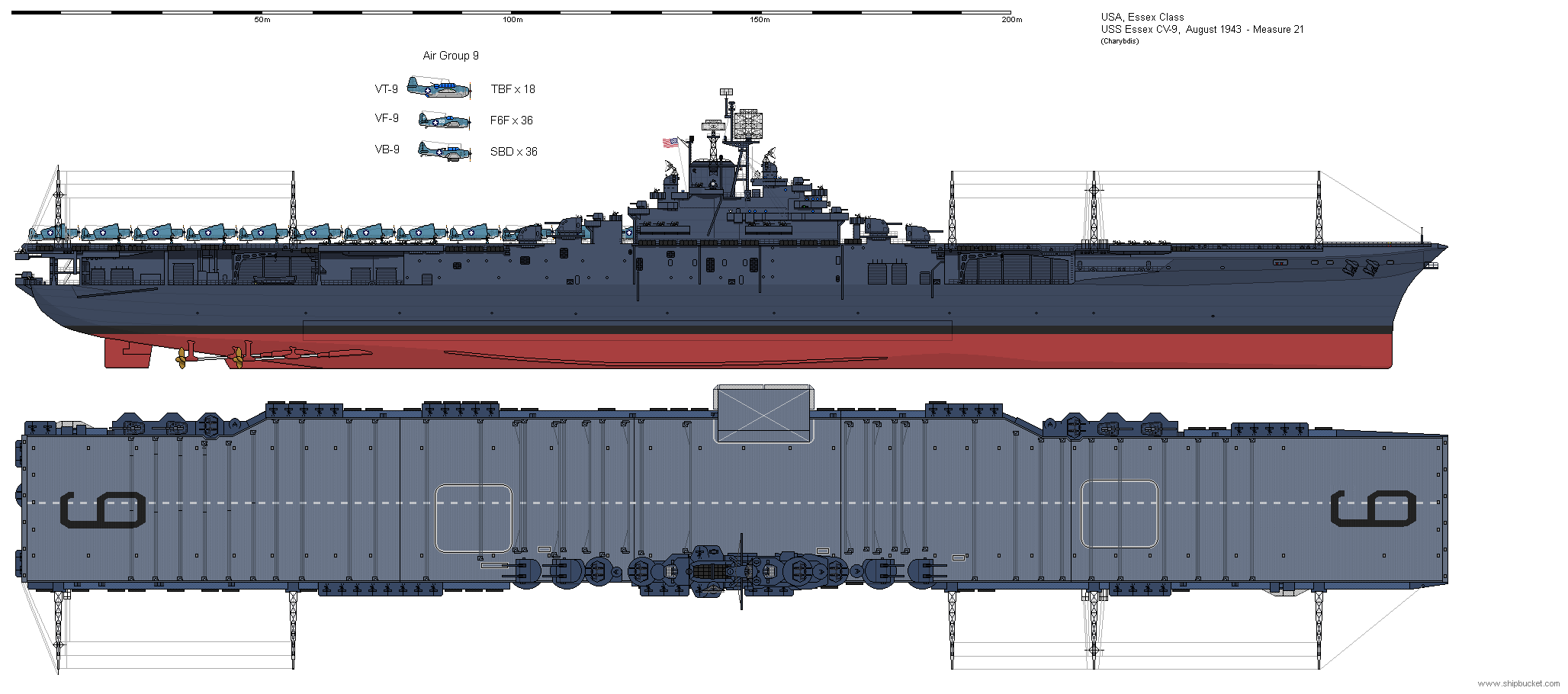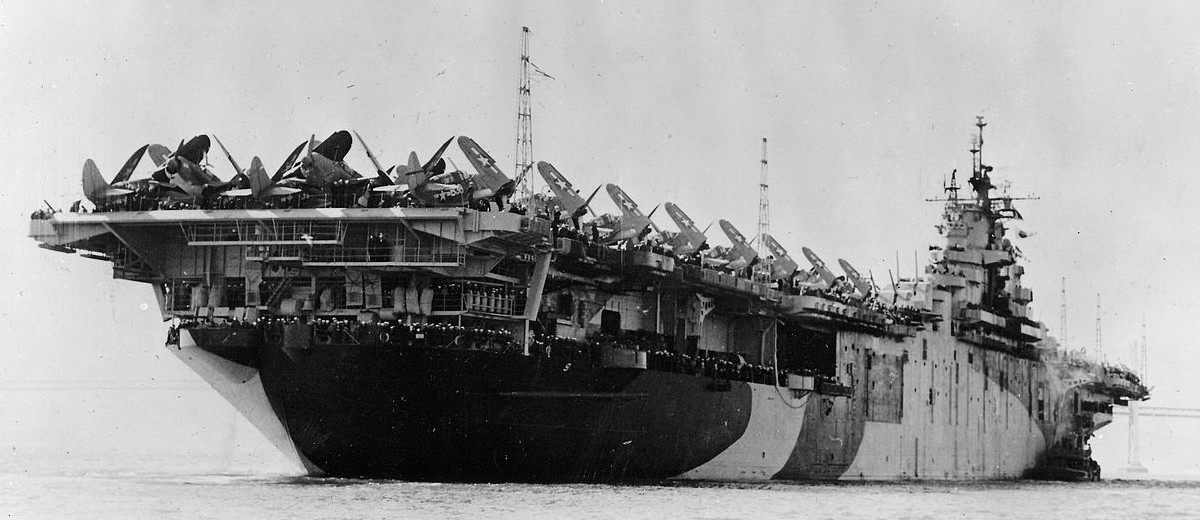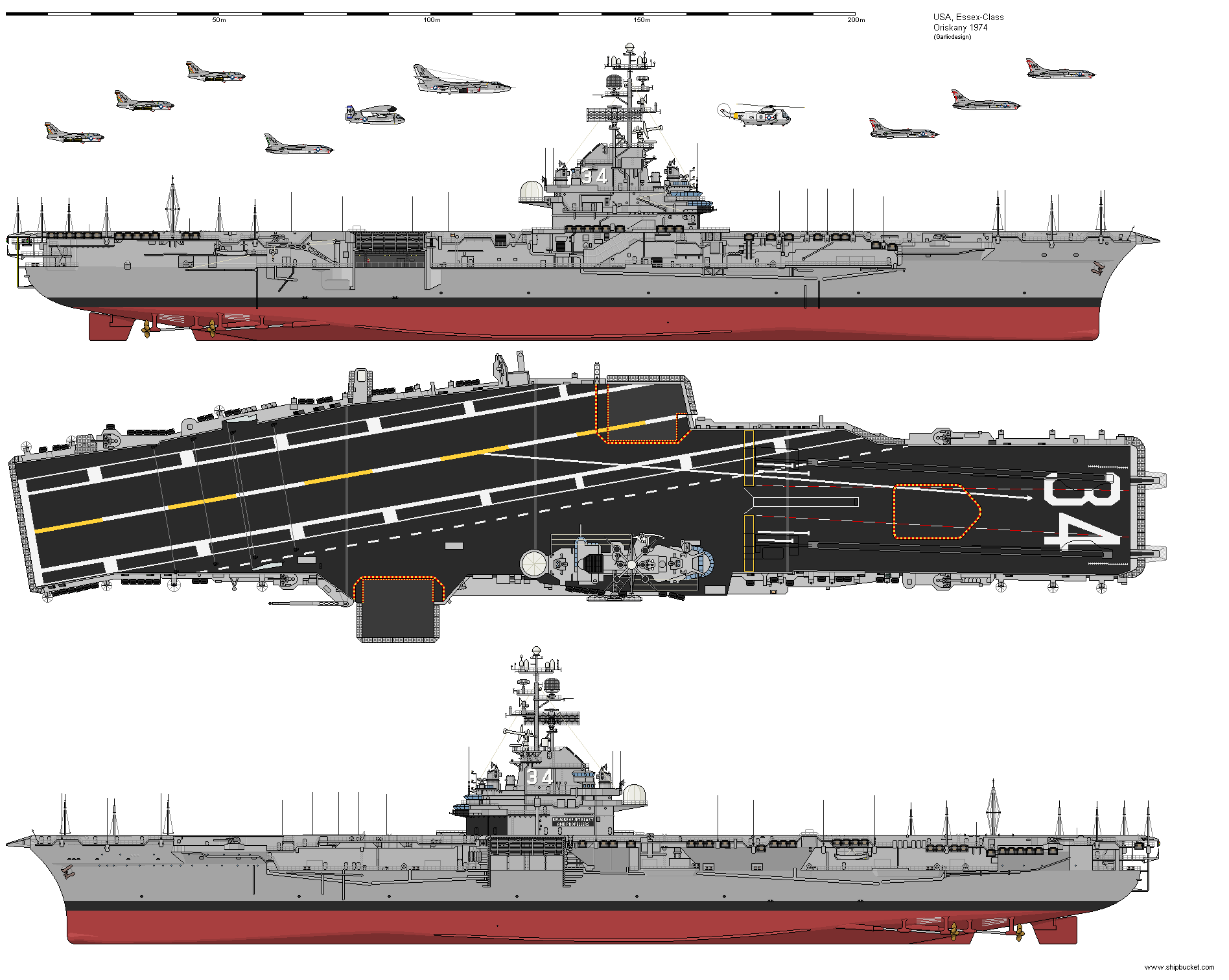18/07/2022. Having done the blurb and drawings for the Essex type, before I did the pre-war carriers, meant that the improvements I did put onto the earlier carriers would need to be carried forward to the Essex as well. So a new set of drawings have been added to enlarge and expand the Essex class.
The Essex class won the Naval war for the Allied Powers. To have 24 large, 110 aircraft capacity, aircraft carriers being completed in the period 1943 to 1950, out produced every other nations output for the war. Japan was trying to produce the Unryu class as their 'production line' type but could not match the output of the US Navy, the carrying capacity of the Unryu was also too small to make them effective against the US Navy monsters. The Germanic States built some fine aircraft carriers but they never really had a chance against the sheer numbers arrayed against them.
One thing I have always wondered about was why the US Navy had the enclosed bow on the Lexington and Saratoga, but it never featured again until the Forrestal class of the 1950's, from new. Many of the Essex class were converted during the 1940's and 50's to have an enclosed bow, also the Midway class. I can only assume it was a weight saving device. The earlier carriers through to the Essex class were all displacement regulated and a few extra tons in the bow could be used more advantageously elsewhere in the ships. Because I have changed the drawings, this complaint of mine has been answered. Enclosed bow fitted to all.

The class was ordered as a pair of improved Yorktown class ships. The Washington and London Naval treaty limits had been removed and with the news of the size of the Japanese battleships and by how far the Japanese had flagrantly thumbed their noses at the 'Treaty' limits, the gloves came off the US Navies building programs. The first ships of this class were laid down in 04/1941 with completion set for December 1942, a total of 32 being ordered. 24 were completed, 14 of which saw action in WW2.

